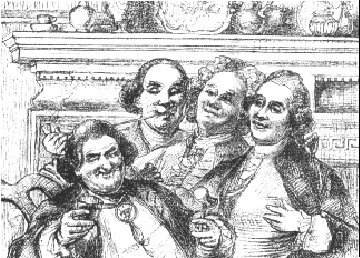


Gadsby’s Tavern (est.The tavern was a building that, in colonial America, was second in importance only to the meetinghouse. 1760) West Springfield, MA Ĭrafts Tavern (est. 1745) Malvern, PA Ĭasparus Mabie House (est. If you are anywhere in the area, these are certainly worthy of a visit: Fortunately, none of the taverns on the following list are in the category of the poor traveler who stayed at the inn somewhere between Bethlehem and Reading. Several original colonial taverns from before or during the time of the American Revolution still exist, and in most cases they endeavor to provide twenty-first century patrons with an authentic eighteenth century tavern experience. A tavern keeper’s pride was generally the punch that he served, which was usually a closely held secret house recipe. Many taverns provided “gambols” or games of chance or skill, as well as entertainment by balladeers and minstrels. While couples and families might have availed themselves of Virginia hospitality for lodging, it was the inn and taverns that attracted travelers and local townsfolk for an evening of convivial food, drink, and entertainment. Hugh Jones wrote of Virginia’s hospitality in 1724: “No people can entertain their friends with better cheer and welcome, and strangers and travelers here are treated in the most free, plentiful and hospitable manner so that few inns or ordinaries on the roads are sufficient. It was not considered an imposition at all, and journals indicate that plantation owners would often station one of their servants by the highway to invite travelers to stay the night in exchange for the latest news or a discussionof topical events. Virginia Colony actually had a hospitality law, which was socially enforced, and records indicate that young newlyweds on their honeymoon travels would stop for the night at the nearest plantation in the evening. In most cases, all they had to do is ask to be accommodated for the night and they would be given room and board.

Women rarely traveled alone, but even when traveling with their husbands or other family members, they were often required to take advantage of the hospitality of private houses in the area. Because of this, most inns could not accommodate women. As more lodgers arrived and a bed reached its capacity, mattress pallets would be placed on the floor of the room to accommodate additional guests. I n all inns, regardless of class, it was not uncommon for travelers to not only share a room, but also the bed, often with complete strangers. Every room swarming with Buggs… If I did not pray all Night, I surely watched, as Sleep was entirely banished from my eyes tho I enclosed myself in a Circle of Candle grease it did not save me from the devourations,”
#Colonial tavern keeper full#
Consequently, inns and taverns ran the full gamut from elegantly genteel and polished establishments to seedy, cramped hovels with fleas, vermin, and rancid food.Ī traveler who stayed in an inn on the road from Bethlehem to Reading, Pennsylvania wrote in 1773, “It was the dirtiest House, without exception in the Province. As a result, only the more expensive taverns whose patrons were of the wealthier class kept a consistent supply of good food and drink, while the lower class taverns that generally served the lower and working classes, mainly served home brew or home distilled rot-gut, and food that was barely edible at best.

However, those laws did not specify nor require specific standards of operation. Colonial laws, dictated that adequate food and drink be available for customers as well as customers’ horses, and a listing of expenses for room, board, and stabling prominently displayed. Gradually, those demarcations blurred, and the names became interchangeable. Initially, an inn was solely an establishment where a traveler could find sleeping accommodations, while a pub (public house) provided food, drink, and socialization. Of that number, approximately twenty-one still exist as taverns, while many others have been converted to private residences, and countless others have been destroyed. During the time of the American Revolution there were between one and two thousand inns and taverns in the English colonies. In addition to their recognized purpose, they also served as post offices, banks, public notice bulletin boards, meeting places, centers of political discussion, and places of social entertainment. Like Taverns or not, which, by-the-way were also known as “Inns,” “Ordinaries,” “Tippling Houses,” “Licensed Houses,” “Public Houses,” “Ale-Houses,” “Pubs,” “Wagon Stands,” “Dram Shops,” “Grog Shops,” and “Slog Shops,” they were an integral part of Colonial society. White Horse Tavern, Newport, Rhode Island est.


 0 kommentar(er)
0 kommentar(er)
